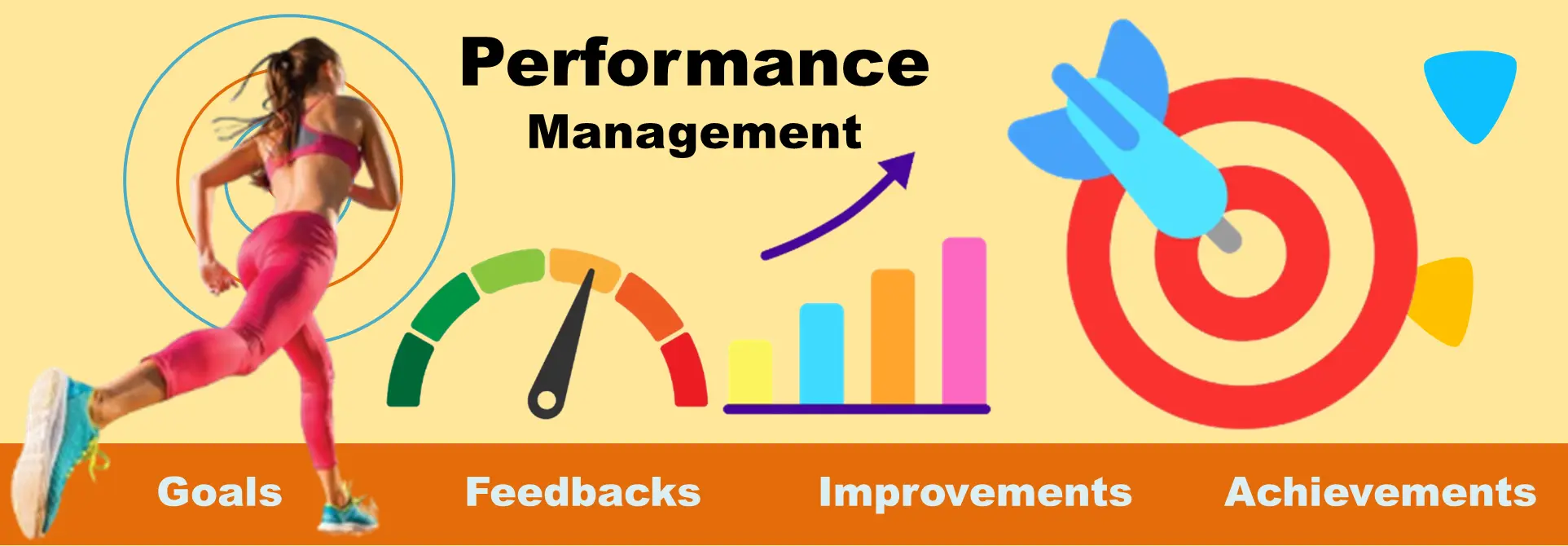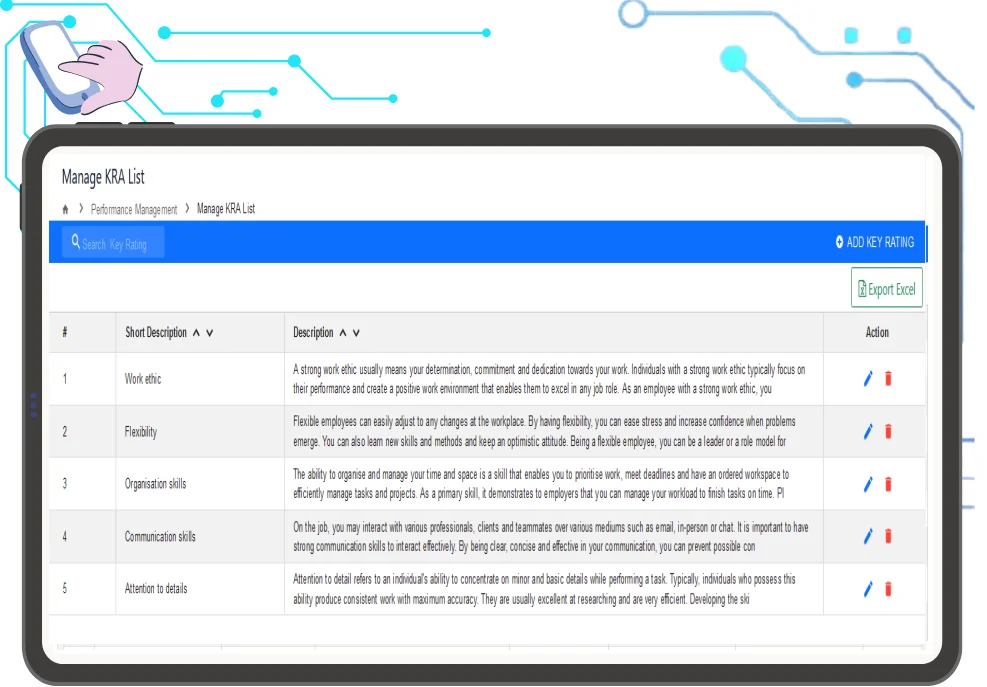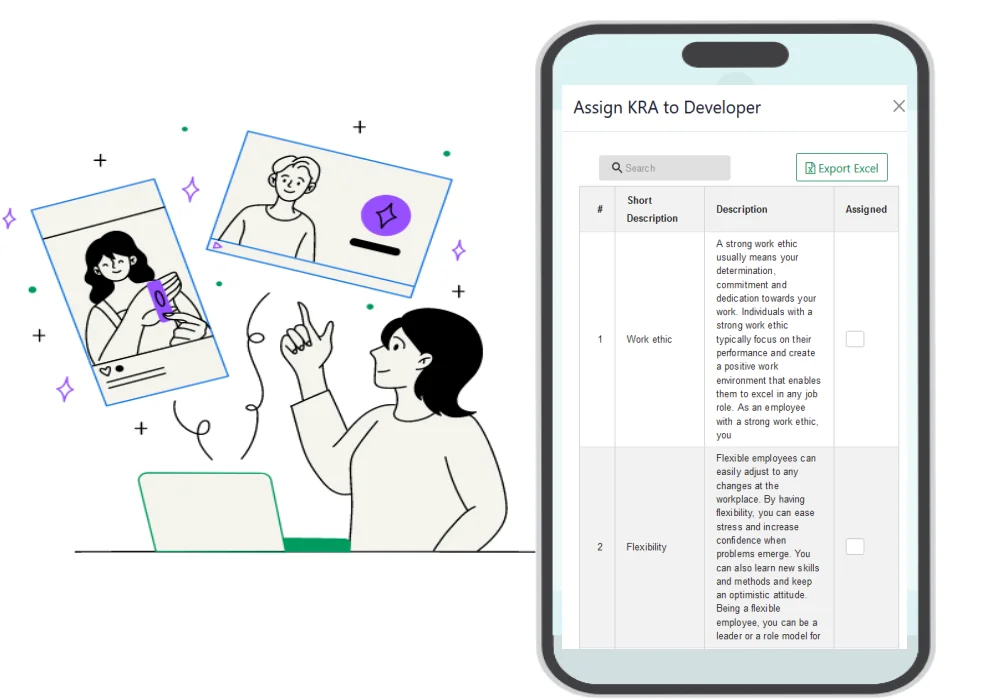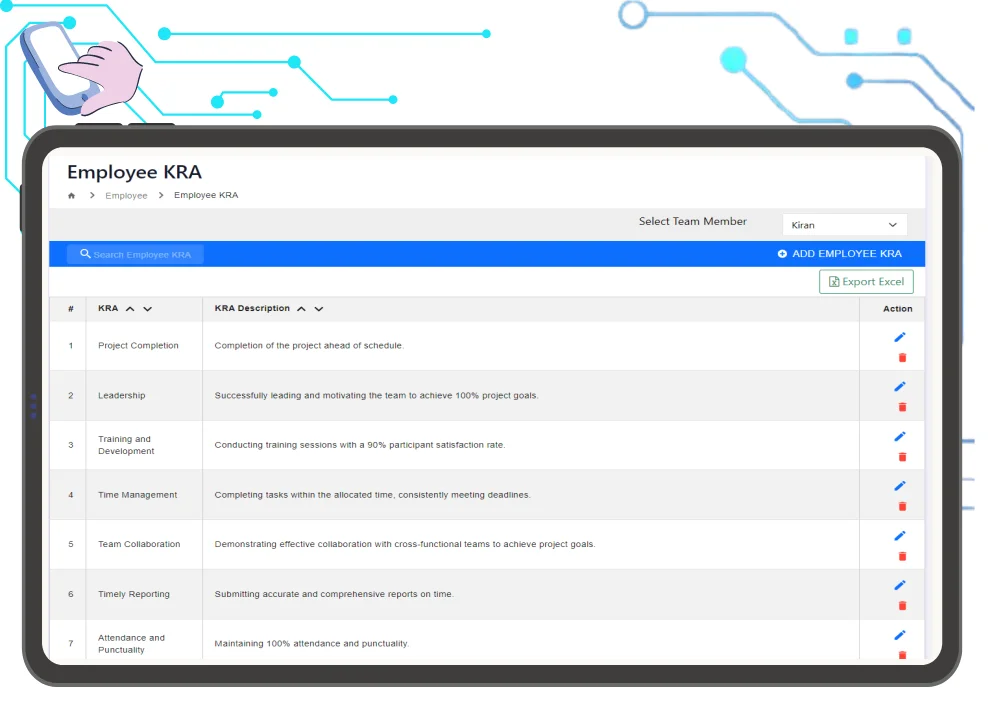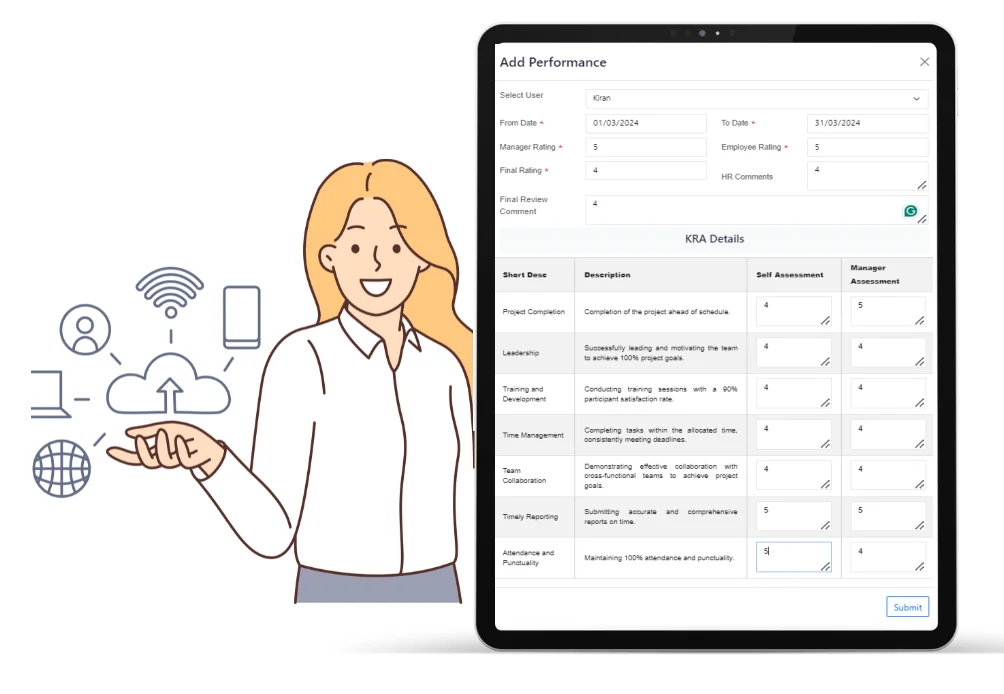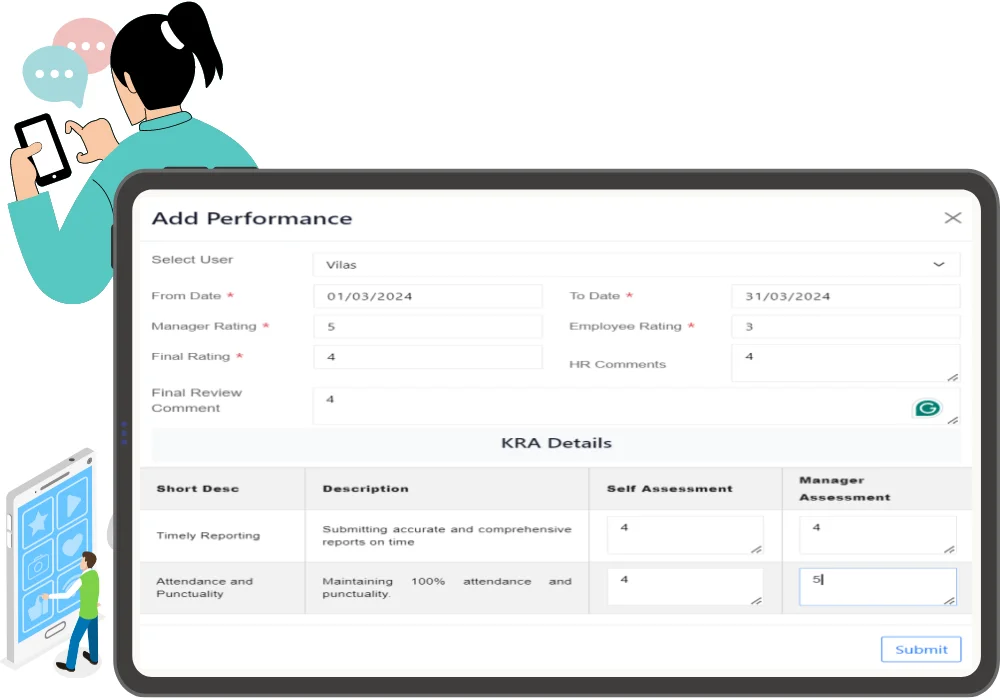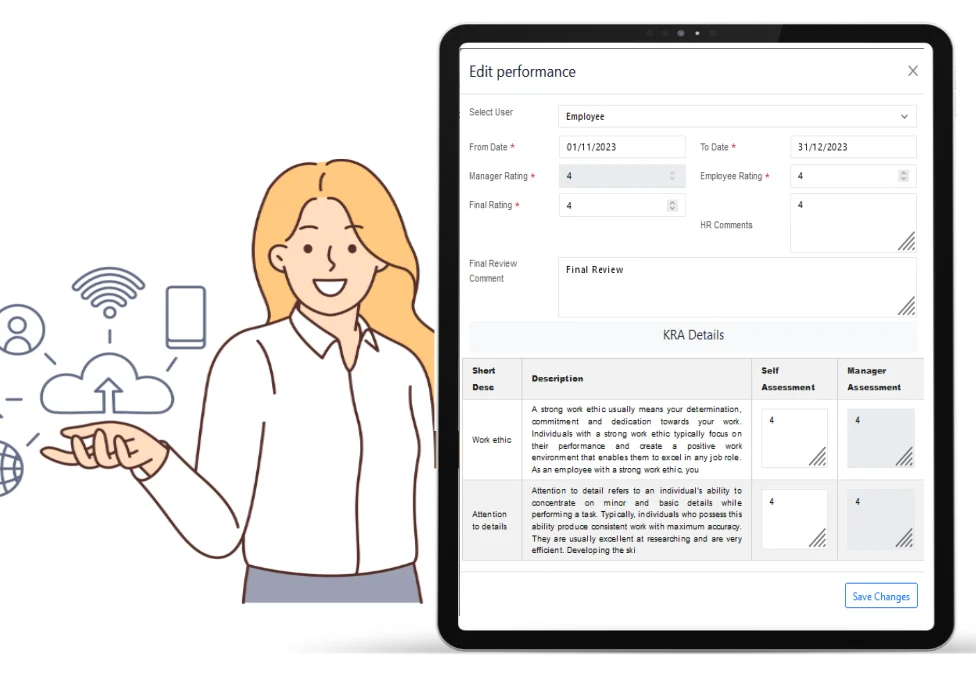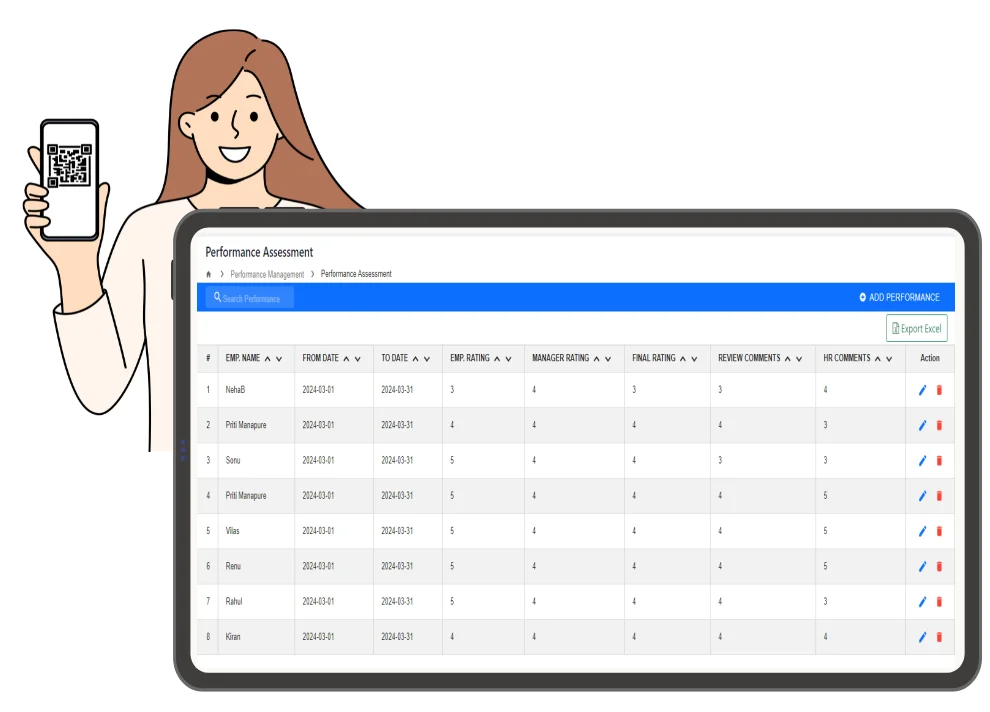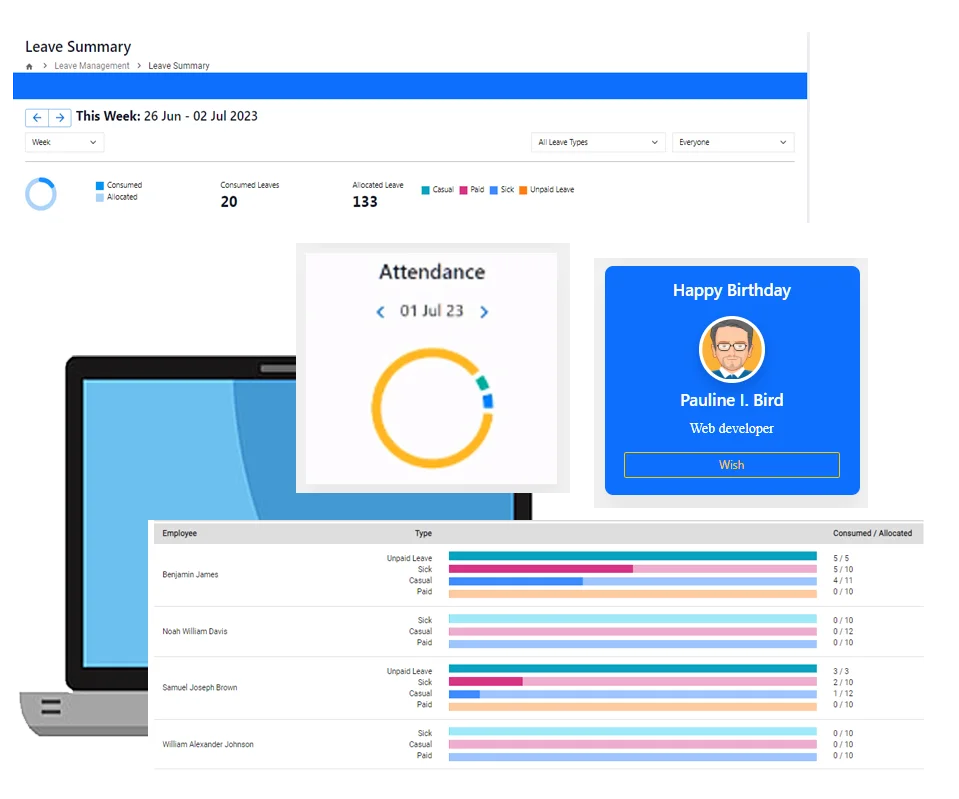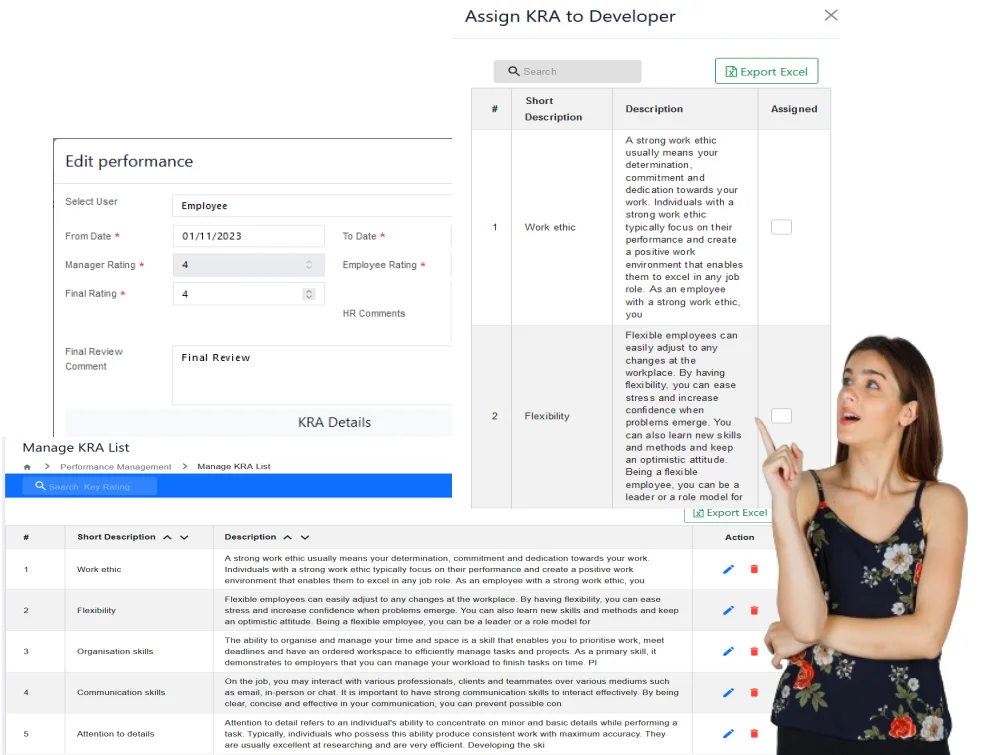
Employee Performance Management System
WiseOfficeDay specializes in optimizing HR functions, tasks and activities, including employee onboarding and specific Key Result Areas (KRAs) tailored to each employee. We prioritize self-assessment of employee performance and provide tools and techniques for effective performance management. Our platform enables employee self-service, streamlining onboarding and performance processes. We define performance clearly, utilizing performance management tools to facilitate feedback and appraisal. Our top 10 strategies enhance employee engagement and align job functions with organizational goals. WiseOfficeDay ensures your workforce operates at peak performance, fostering a productive and dynamic workplace environment.
Lets's GET STARTED